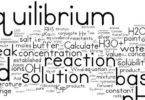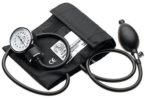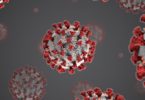Surface Chemistry Practice Test Questions:
Milk is an example of
(a) Pure solution
(b) Gel
(c) Emulsion
(d) Suspension
The coagulation of 100 ml of a colloidal sol of gold is completely prevented by addition of 0.25 g of a substance `X‘ to it before adding 10 ml of 1% NaCl solution. The gold number of `X‘ is
(a) 0.25
(b) 25
(c) 250
(d) 2.5
Which of the following is contributed towards the extra stability of lyophilic colloids?
(a) Hydration
(b) Charge
(c) Colour
(d) Tyndall effect
Related: biomass energy mcq
Which one of the following is not a property of hydrophilic sols?
(a) High concentrations of dispersed phase can be easily attained
(b) Coagulation is reversible
(c) Viscosity and surface tension are about the same as for water
(d) The charge of the particle depends on the pH values of the medium; it may be positive, negative or even zero
Chemisorption
(a) Increases with temperature
(b) Decreases with temperature
(c) Remains unaffected by change of temperature
(d) Either increases or decreases with temperature
Peptising agent is
(a) Always an electrolyte
(b) Always a non-electrolyte
(c) Electrolyte or non-electrolyte
(d) A lyophilic colloid
0.2 gm of fine animal charcoal is mixed with half litre of acetic acid solution and shaken for 30 minutes
(a) Concentration remains same
(b) Concentration increases
(c) Concentration of the solution decrease
Related: Trigonometry (Maths) Question Bank
Organic catalysts differ from inorganic catalysts
(a) By acting at very high temperature
(b) By acting at low temperature
(c) Being used up
(d) Being proteinous in nature
A catalyst is used
(a) Only for increasing the velocity of the reaction
(b) For altering the velocity of the reaction
(c) Only for decreasing the velocity of the reaction
(d) All are correct
The ability of a catalyst to accelerate the chemical reaction is known asa
(a) Selectively
(b) Activity
(c) Negative catalyst
Which of the following catalyses the conversion of glucose into ethanol?
(a) Zymase
(b) Invertase
(c) Maltase
(d) Diastase
Related: Coordination Chemistry Sample Paper (MCQs)
On addition of one ml of 10% NaCl solution to 10 ml gold sol in the presence of 0.25 gm of starch. The coagulation is just prevented, starch has gold number
(a) 0.025
(b) 0.25
(c) 2.5
(d) None
A biological catalyst is essentially
(a) An amino acid
(b) A carbohydrate
(c) The nitrogen molecule
(d) An enzyme
Which of the following types of metals form the most efficient catalysts?
(a) Alkali metals
(b) Alkaline earth metals
(c) Transition metals
(d) All of these
If the dispersed phase is a liquid and the dispersion medium is a solid, the colloid is known as
(a) A sol
(b) An emulsion
(c) A gel
(d) A foam
Related: the atomic number and mass number quiz
Detergent action of soap is due to
(a) Emulsification properties
(b) Hydrolysis
(c) Ionization
(d) High molecular weight
In emulsions, the dispersion medium and dispersed phase are
(a) Both solids
(b) Both gases
(c) Both liquids
(d) One is solid and other is liquid
Blood contains
(a) Positively charged particles
(b) Negatively charged particles
(c) Neutral particles
(d) Negatively as well as positively charged particles
Which of the following is a lyophilic colloid?a
(a) Milk
(b) Gum
(c) Fog
(d) Blood
Related: Biomolecules mcq
Emulsifiers are generally
(a) Soap
(b) Synthetic detergents
(c) Lyophilic sols
(d) All of these






